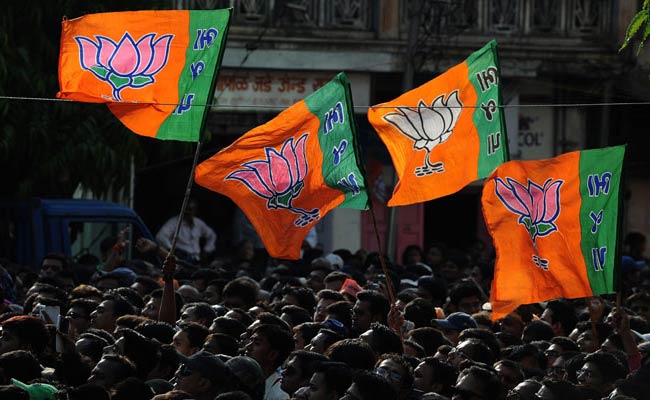
One out of four BJP candidates in the 2024 Lok Sabha elections are defectors from other parties. An analysis of the 417 candidates announced shows that 116 of them, that is 28%, have switched sides to join the Bharatiya Janata Party (BJP). The highest number of such defectors, 37, are from the Indian National Congress.
In Indian politics, the phrase 'Aya Ram Gaya Ram' is often used to describe politicians who frequently switch parties. The story goes that Gaya Lal, an MLA from Hodal, Haryana, won the election as an independent candidate in 1967 and joined the Congress. Thereafter, he changed parties thrice in 15 days.
Between 1967 and 1983, there were approximately 2,700 defections at the state level. As many as 15 defectors went on to become chief ministers. This high number of defections led to the enactment of the Anti-Defection Law, the 52nd Amendment Act of 1985.
Even though the anti-defection law is in place, it is very easy to circumvent it. The Supreme Court's rulings on this matter have also not been enough to curb the malaise. Politicians now often resign from their original party, instead of formally 'crossing the floor' or voting against their party in a confidence motion. This sidesteps the law, while bringing down the party's strength in the House.
An analysis of 433 MPs and MLAs who changed parties and re-contested elections held between 2016 and 2020 shows that out of 405 MLAs who switched political parties, 182, almost 45%, joined the BJP. Out of 16 Rajya Sabha MPs who switched political parties, 10, that is over 60%, joined the BJP.
Here are five instances from recent history where democratically elected state governments have been toppled through defections.
1. Karnataka
A party or coalition needs 113 seats for a majority in the 224-member state assembly. The Congress and the Janata Dal (Secular) (JD-S) formed a coalition government in 2018 with 115 MLAs. However, 13 MLAs of the Congress and three MLAs of the JD(S) resigned within 14 months, reducing the strength of the House to 208, and the majority mark came down to 105 seats. The BJP, which had exactly 105 MLAs, proved its majority and formed the next government.
2. Madhya Pradesh
The fall of the Kamal Nath-led government started with the resignation of Jyotiraditya Scindia from his seat in Parliament. Following this, MLAs loyal to Scindia, including six ministers, resigned. This led to the toppling of the Congress government in the state and paved the way for the formation of the Shivraj Singh Chouhan-led BJP government. Scindia was awarded by being made a minister in the Union cabinet.
3. Manipur
In the 2017 Manipur Assembly Elections, the Congress won 28 seats and the BJP 21. The majority mark in the 60-member House is 31. The BJP and its allies together had 30 seats. The BJP got a single Congress MLA to form the government. Later, eight other Congress MLAs lent their 'unofficial' support to the BJP. The Congress MLAs who supported the BJP never actually resigned from the Congress or issued letters of support for the BJP-led government. They even continued sitting in the Opposition benches to avoid violating the anti-defection law.
4. Arunachal Pradesh
After forming the government in 2014, Congress Chief Minister Pema Khandu took 43 of his party MLAs with him in 2016 and joined the People's Party of Arunachal (PPA), which was in alliance with the BJP. By the end of that year, 33 PPA MLAs joined the BJP and formed the government. Later, two more Congress MLAs defected to the BJP. Within a span of one year, mass defections brought the number of Congress MLAs down from 47 to just one.
5. Maharashtra
In 2019, the BJP won 105 seats, followed by the Shiv Sena with 56, the NCP 54 and the Congress 44. The majority mark in the 288-member House is 145. The BJP and the Shiv Sena were to form the government; however, they had a falling out. When the possibility of a non-BJP government was imminent, President's Rule was imposed in the state. On November 23, 2019, at 5.47 a.m., the Union government invoked Rule 12 of the Transaction of Business Rules, 1961, which empowered it to revoke the proclamation of President's Rule in Maharashtra without the prior approval of the Union Cabinet. This allowed the BJP a chance to form the government when it briefly gained the support of Ajit Pawar.
The resultant government lasted just 80 hours. Ajit Pawar and Fadnavis resigned. This led to the formation of a coalition government comprising the Shiv Sena, the Nationalist Congress Party (NCP) and the Congress. In June 2022, a Shiv Sena member, Eknath Shinde, with two-thirds of the Shiv Sena MLAs, revoked support to the Uddhav Thackeray government and claimed to be the real Shiv Sena. Shinde and his MLAs then formed a government in coalition with the BJP, with former chief minister Fadnavis as his deputy.
These incidents highlight the urgent need to reassess the existing anti-defection law and give it more teeth. Blatant subversion of people's mandates must come to a stop.
(Derek O'Brien, MP, leads the Trinamool Congress in the Rajya Sabha.)
Disclaimer: These are the personal opinions of the author.
from NDTV News- Topstories https://ift.tt/j1ZU4KP
https://ift.tt/phTAtfb






0 comments:
Post a Comment